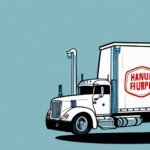Importance of Route Planning in Transportation Logistics
In the realm of transportation logistics, creating efficient routes is paramount to optimizing time and resources. A critical aspect of route planning is determining the number of stops drivers must make along the way. The number of stops directly impacts fuel consumption, delivery times, driver productivity, and overall customer satisfaction. Efficient route planning ensures that goods are delivered promptly while minimizing operational costs.
Factors Influencing the Number of Stops
Distance
The total distance of a route typically correlates with the number of stops required. Longer routes may necessitate more stops to cover a wider area, whereas shorter routes can often be completed with fewer stops, enhancing efficiency.
Type of Goods
The nature of the goods being transported significantly affects stop planning. Perishable items, such as food and pharmaceuticals, may require more frequent stops to ensure freshness and compliance with safety standards. Conversely, non-perishable goods can endure longer travel times with fewer stops.
Weather Conditions
Adverse weather can impact road conditions and travel times. Route planners must account for potential delays caused by weather, adjusting the number of stops to maintain timely deliveries.
Time of Day
Peak traffic hours can cause significant delays. Scheduling stops during off-peak times can reduce travel time and avoid congestion, leading to more efficient route planning.
Customer Preferences
Customer-specific requirements, such as preferred delivery windows or special handling instructions, can influence the number of stops on a route. Tailoring routes to meet these preferences enhances customer satisfaction.
Determining the Optimal Number of Stops
Route Optimization Software
Utilizing advanced route optimization software can streamline the process of determining the ideal number of stops. These tools analyze various factors, including location data, traffic patterns, and delivery schedules, to suggest the most efficient routes.
Type and Size of Goods
The type and size of goods play a crucial role in stop determination. Larger or bulkier items may require more stops for unloading, while smaller parcels can be delivered with fewer stops.
Availability of Facilities
The presence of rest areas, loading zones, and maintenance facilities along a route affects the number of stops. Adequate facilities allow for fewer, more strategic stops, enhancing route efficiency.
Benefits and Drawbacks of Stop Count
Benefits of Minimizing Stops
- Cost Savings: Fewer stops reduce fuel consumption and vehicle wear and tear.
- Improved Delivery Times: Streamlined routes lead to faster deliveries.
- Increased Driver Morale: Reduced stops can lead to a less stressful driving experience.
- Environmental Impact: Lower fuel usage decreases carbon emissions.
Drawbacks of Excessive Stops
- Increased Costs: More stops lead to higher fuel and maintenance expenses.
- Extended Delivery Times: Additional stops can delay overall delivery schedules.
- Driver Fatigue: Frequent stops may contribute to driver exhaustion.
- Customer Dissatisfaction: Delays caused by too many stops can frustrate customers.
Tools and Strategies for Route Optimization
Strategies for Building Efficient Routes
- Grouping Deliveries: Consolidate deliveries within the same geographic area to minimize travel distance.
- Real-Time Traffic Data: Use live traffic updates to adjust routes dynamically and avoid congestion.
- Customer Feedback: Incorporate customer preferences and feedback to refine route planning.
Route Optimization Software
Tools like Route4Me and Optimo Route Planner offer sophisticated algorithms to optimize routes based on multiple variables, including stop count, traffic conditions, and delivery priorities.
Real-World Examples
Major companies such as UPS, FedEx, and Amazon leverage advanced route planning techniques and software to enhance their logistics operations, resulting in significant cost savings and improved delivery performance.
Future Trends in Route Planning
Predictive Analytics and Machine Learning
The integration of predictive analytics and machine learning is revolutionizing route planning. These technologies enable the anticipation of potential disruptions and the optimization of routes in real-time, enhancing overall efficiency.
Renewable Energy and Smart Technologies
Advancements in renewable energy-powered vehicles and smart traffic signal systems are poised to further optimize route planning by reducing environmental impact and improving traffic flow.
Best Practices for Balancing Efficiency and Customer Satisfaction
- Transparent Communication: Keep customers informed about delivery times and any potential delays.
- Real-Time Tracking: Provide customers with the ability to track their deliveries in real-time.
- Consistent Service Quality: Ensure reliable and high-quality delivery experiences to maintain customer loyalty.
- Data-Driven Decisions: Use analytics to continuously monitor and improve routing efficiency.
Key Metrics to Measure Route Success
- Number of Deliveries Per Day: Tracks the volume of deliveries completed within a day.
- Average Delivery Time: Measures the typical time taken to complete a delivery.
- Customer Feedback: Gathers insights on customer satisfaction and areas for improvement.
- Cost Impact: Assesses the financial efficiency of routing decisions.
Conclusion
Effective route planning, centered around the optimal number of stops, is essential for a successful transportation logistics network. By leveraging advanced tools, implementing best practices, and staying attuned to future technological advancements, transportation companies can achieve a balance between operational efficiency and customer satisfaction, ultimately driving long-term success.




















